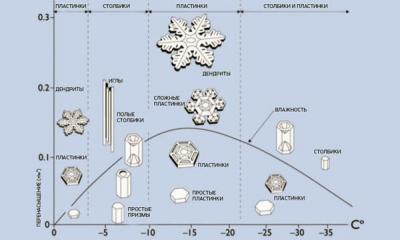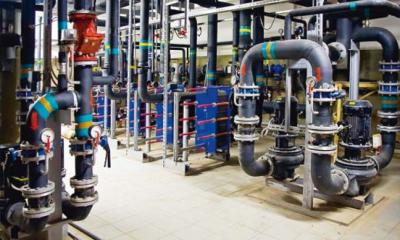YouTube Encyclopedic
1 / 5
Views:Simple Machines for Kids: Science and Engineering for Children - FreeSchool
Science - Simple machine (Screw, wedge and lever) - Hindi
Simple Machines (Song and lyrics)
Simple Machines Types & Functions Kindergarten,Preschoolers,Kids
Super Simple Machines: Levers
Transcription
You"re watching FreeSchool! Hi everyone! Today we"re going to talk about simple machines. A simple machine is a device that makes work easier by magnifying or changing the direction of a force. That means that simple machines allow someone to do the same work with less effort! Simple machines have been known since prehistoric times and were used to help build the amazing structures left behind by ancient cultures. The Greek philosopher Archimedes identified three simple machines more than 2,000 years ago: the lever, the pulley, and the screw. He discovered that a lever would create a mechanical advantage, which means that using a lever would allow a person to move something that would normally be too heavy for them to shift. Archimedes said that with a long enough lever and a place to rest it, a person could move the world. Over the next few centuries more simple machines were recognized but it was less than 450 years ago that the last of the simple machines, the inclined plane, was identified. There are six types of simple machines: the Lever, the Wheel and Axle, the Pulley, the Inclined plane, the Wedge, and the Screw. Pulleys and Wheel and Axles are both a type of Lever. Wedges and Screws are both types of Inclined Planes. Each type of Simple Machine has a specific purpose and way they help do work. When speaking of simple machines, "work" means using energy to move an object across a distance. The further you have to move the object, the more energy it takes to move it. Let"s see how each type of simple machine helps do work. A LEVER is a tool like a bar or rod that sits and turns on a fixed support called a fulcrum. When you use a lever, you apply a small force over a long distance, and the lever converts it to a larger force over a shorter distance. Some examples of levers are seesaws, crowbars, and tweezers. A Wheel and Axle is easy to recognize. It consists of a wheel with a rod in the middle. You probably already know that it"s easier to move something heavy if you can put it in something with wheels, but you might not know why. For one thing, using wheels reduces the friction - or resistance between surfaces - between the load and the ground. Secondly, much like the lever, a smaller force applied to the rim of the wheel is converted to a larger force traveling a smaller distance at the axle. Wheel and axles are used for machines such as cars, bicycles, and scooters, but they are also used in other ways, like doorknobs and pencil sharpeners. A Pulley is a machine that uses a wheel with a rope wrapped around it. The wheel often has a groove in it, which the rope fits into. One end of the rope goes around the load, and the other end is where you apply the force. Pulleys can be used to move loads or change the direction of the force you are using, and help make work easier by allowing you to spread a weaker force out along a longer path to accomplish a job. By linking multiple pulleys together, you can do the same job with even less force, because you are applying the force along a much longer distance. Pulleys may be used to raise and lower flags, blinds, or sails, and are used to help raise and lower elevators. An Inclined Plane is a flat surface with one end higher than the other. Inclined planes allow loads to slide up to a higher level instead of being lifted, which allows the work to be accomplished with a smaller force spread over a longer distance. You may recognize an inclined plane as the simple machine used in ramps and slides. A Wedge is simply two inclined planes placed back to back. It is used to push two objects apart. A smaller force applied to the back of the wedge is converted to a greater force in a small area at the tip of the wedge. Examples of wedges are axes, knives, and chisels. A Screw is basically an inclined plane wrapped around a pole. Screws can be used to hold things together or to lift things. Just like the inclined plane, the longer the path the force takes, the less force is required to do the work. Screws with more threads take less force to do a job since the force has to travel a longer distance. Examples of screws are screws, nuts, bolts, jar lids, and lightbulbs. These six simple machines can be combined to form compound or complex machines, and are considered by some to be the foundation of all machinery. For example, a wheelbarrow is made of levers combined with a wheel and axle. A pair of scissors is another complex machine: the two blades are wedges, but they are connected by a lever that allows them to come together and cut. We use simple machines to help us do work every day. Every time you open a door or a bottle, cut up your food, or even just climb stairs, you are using simple machines. Take a look and see if you can identify the simple machines around you and figure out how they make it easier to do work.
Contents
History
The idea of a simple machine originated with the Greek philosopher Archimedes around the 3rd century BC, who studied the Archimedean simple machines: lever, pulley, and screw . He discovered the principle of mechanical advantage in the lever. Archimedes" famous remark with regard to the lever: "Give me a place to stand on, and I will move the Earth." (Greek : δῶς μοι πᾶ στῶ καὶ τὰν γᾶν κινάσω ) expresses his realization that there was no limit to the amount of force amplification that could be achieved by using mechanical advantage. Later Greek philosophers defined the classic five simple machines (excluding the inclined plane) and were able to roughly calculate their mechanical advantage. For example, Heron of Alexandria (ca. 10–75 AD) in his work Mechanics lists five mechanisms that can "set a load in motion"; lever , windlass , pulley , wedge , and screw , and describes their fabrication and uses. However the Greeks" understanding was limited to the statics of simple machines; the balance of forces, and did not include dynamics ; the tradeoff between force and distance, or the concept of work .
Frictionless analysis
Although each machine works differently mechanically, the way they function is similar mathematically. In each machine, a force F in {\displaystyle F_{\text{in}}\,} is applied to the device at one point, and it does work moving a load, F out {\displaystyle F_{\text{out}}\,} at another point. Although some machines only change the direction of the force, such as a stationary pulley, most machines multiply the magnitude of the force by a factor, the mechanical advantage
M A = F out / F in {\displaystyle \mathrm {MA} =F_{\text{out}}/F_{\text{in}}\,}that can be calculated from the machine"s geometry and friction.
The mechanical advantage can be greater or less than one:
- The most common example is a screw. In most screws, applying torque to the shaft can cause it to turn, moving the shaft linearly to do work against a load, but no amount of axial load force against the shaft will cause it to turn backwards.
- In an inclined plane, a load can be pulled up the plane by a sideways input force, but if the plane is not too steep and there is enough friction between load and plane, when the input force is removed the load will remain motionless and will not slide down the plane, regardless of its weight.
- A wedge can be driven into a block of wood by force on the end, such as from hitting it with a sledge hammer, forcing the sides apart, but no amount of compression force from the wood walls will cause it to pop back out of the block.
A machine will be self-locking if and only if its efficiency η is below 50%:
η ≡ F o u t / F i n d i n / d o u t < 0.50 {\displaystyle \eta \equiv {\frac {F_{out}/F_{in}}{d_{in}/d_{out}}}<0.50\,}Whether a machine is self-locking depends on both the friction forces (coefficient of static friction) between its parts, and the distance ratio d in /d out (ideal mechanical advantage). If both the friction and ideal mechanical advantage are high enough, it will self-lock.
Proof
When a machine moves in the forward direction from point 1 to point 2, with the input force doing work on a load force, from conservation of energy the input work W 1,2 {\displaystyle W_{\text{1,2}}\,} is equal to the sum of the work done on the load force W load {\displaystyle W_{\text{load}}\,} and the work lost to friction
W 1,2 = W load + W fric (1) {\displaystyle W_{\text{1,2}}=W_{\text{load}}+W_{\text{fric}}\qquad \qquad (1)\,}If the efficiency is below 50% η = W load / W 1,2 < 1 / 2 {\displaystyle \eta =W_{\text{load}}/W_{\text{1,2}}<1/2\,}
2 W load < W 1,2 {\displaystyle 2W_{\text{load}}When the machine moves backward from point 2 to point 1 with the load force doing work on the input force, the work lost to friction W fric {\displaystyle W_{\text{fric}}\,} is the same
W load = W 2,1 + W fric {\displaystyle W_{\text{load}}=W_{\text{2,1}}+W_{\text{fric}}\,}So the output work is
W 2,1 = W load − W fric < 0 {\displaystyle W_{\text{2,1}}=W_{\text{load}}-W_{\text{fric}}<0\,}Thus the machine self-locks, because the work dissipated in friction is greater than the work done by the load force moving it backwards even with no input force
Modern machine theory
Kinematic chains
Classification of machines
The identification of simple machines arises from a desire for a systematic method to invent new machines. Therefore, an important concern is how simple machines are combined to make more complex machines. One approach is to attach simple machines in series to obtain compound machines.
However, a more successful strategy was identified by Franz Reuleaux , who collected and studied over 800 elementary machines. He realized that a lever, pulley, and wheel and axle are in essence the same device: a body rotating about a hinge. Similarly, an inclined plane, wedge, and screw are a block sliding on a flat surface.
This realization shows that it is the joints, or the connections that provide movement, that are the primary elements of a machine. Starting with four types of joints, the revolute joint , sliding joint , cam joint and gear joint , and related connections such as cables and belts, it is possible to understand a machine as an assembly of solid parts that connect these joints.
See also
References
- Chambers, Ephraim (1728), "Table of Mechanicks", Cyclopædia, A Useful Dictionary of Arts and Sciences , London, England, Volume 2, p. 528, Plate 11 .
- Paul, Akshoy; Roy, Pijush; Mukherjee, Sanchayan (2005), Mechanical sciences: engineering mechanics and strength of materials , Prentice Hall of India, p. 215, ISBN .
- ^ Asimov, Isaac (1988), Understanding Physics , New York, New York, USA: Barnes & Noble, p. 88, ISBN .
- Anderson, William Ballantyne (1914). Physics for Technical Students: Mechanics and Heat . New York, USA: McGraw Hill. pp. 112–122. Retrieved 2008-05-11 .
- ^ Compound machines , University of Virginia Physics Department, retrieved 2010-06-11 .
- ^ Usher, Abbott Payson (1988). A History of Mechanical Inventions . USA: Courier Dover Publications. p. 98. ISBN .
- Wallenstein, Andrew (June 2002). . Proceedings of the 9th Annual Workshop on the Design, Specification, and Verification of Interactive Systems . Springer. p. 136. Retrieved 2008-05-21 .
- ^ Prater, Edward L. (1994), Basic machines (PDF) , U.S. Navy Naval Education and Training Professional Development and Technology Center, NAVEDTRA 14037.
- U.S. Navy Bureau of Naval Personnel (1971), Basic machines and how they work (PDF) , Dover Publications.
- Reuleaux, F. (1963) , The kinematics of machinery (translated and annotated by A.B.W. Kennedy) , New York, New York, USA: reprinted by Dover.
- Cornell University , Reuleaux Collection of Mechanisms and Machines at Cornell University , Cornell University.
- ^ Chiu, Y. C. (2010), An introduction to the History of Project Management , Delft: Eburon Academic Publishers, p. 42,
| After exploring some or all of the websites below, complete one or more of these activities: Investigate Wheels with Your Bicycle. Go to PBS Teachersource"s website and use your bicycle to learn about the wheel. Find Out How Stuff Works. Check out How Stuff Works . Look for a device that uses a simple machine as part of how it works. Create a poster showing how it works. Gear Up with a Tricycle & Bicycle. Visit PBS Teachersource"s site and follow the procedures there to learn a lot more about gears. Complete a Simple Machines WebQuest. Follow or adapt the procedures found at one of these webQuest sites: 1) Exploring Simple Machines by Paula Markowitz (Grade 4) http://www.lakelandschools.org/EDTECH/Machines/Machines.htm 2) Simple Machines http://www.eng.iastate.edu/twt/Course/packet/labs/wheels&leverLab.htm 3) Simple Machines WebQuest (Grade 4-6) http://www.plainfield.k12.in.us/hschool/webq/webq8/jjquest.htm 4) Simple Machines http://www.beth.k12.pa.us/schools/wwwclass/mcosgrove/simple.htm 5) Simple Machines Webquest http://www.jsd.k12.ak.us/ab/el/simplemachines.html Complete an Online Simple Machines Activity. Learn more about simple machines by following the directions at A Time for Simple Machines . You may also want to test your knowledge at Gadget Anatomy . Complete Some Simple Machine Experiments. Find lots of experiments at sites like Marvelous Machines and Motion, Energy and Simple Machines . |
A simple machine is a mechanical device that consists of a minimum of moving parts but yet can create an improvement of the output over the input. The improvement could be creating a mechanical advantage or simply changing the direction of the output. Mechanical advantage is the increase of force, distance or speed from the input value.
Around the 16th century, the classic list of simple machines was determined. The list consisted of the lever, wheel and axle, pulley, inclined plane, wedge, and screw.
These simple machines can be broken into three classifications: lever simple machines, rotating simple machines, and inclined plane simple machines.
Questions you may have include:
- What do lever simple machines do?
- What do rotating simple machines do?
- What do inclined plane simple machines do?
This lesson will answer those questions. Useful tool: Units Conversion
Lever simple machines
The lever simply consists of a rod or board that pivots on a fulcrum, creating a mechanical advantage or a change in direction.
The lever is a classic simple machine that achieves a mechanical advantage according to the ratio of the output or load arm of the lever divided by the input or effort arm.
The mechanical advantage of a lever can concern force, distance, or speed of the output.
The efficiency of the lever is very high, since the loss due to friction at the fulcrum is low.
Rotating simple machines
Rotating simple machines include rollers, wheel and axle, crank, and pulley.
Rollers
The wheel or roller by itself can make it easier to move objects by overcoming friction.
Wheel and axle
When an axle is added to a wheel, a torque on the axle increases the speed of the outer surface of the wheel. Likewise, turning the wheel from its outer edge increases the force applied from the axle.
Crank
A crank is like a wheel and axle. You can push on the handle of a crank, and it will create a twisting force or torque on the axle. This is a variation of the wheel and axle.
Pulley
A pulley is a wheel and axle, that uses a rope to lift objects. A major purpose of a pulley is to change the direction of the input force. You can pull down one a pulley rope, and the rope will lift the object upward.

Complex set of pulleys
A complex set up pulleys, such as a block-and-tackle configuration, can result in a mechanical advantage. The question is that if it is a complex set, is it still a simple machine? Probably not.
Inclined plane simple machines
Variations of an inclined plane include a ramp, wedge, and screw.
Ramp
The inclined plane or ramp makes raising a weight to a given height easier, according to the angle of the incline. Unfortunately, the resistive force of friction from sliding the object on the ramp can negate the mechanical advantage.
Variations of the inclined plane are the wedge and screw.
Wedge
Although a wedge is considered a simple machine, it is really a special application of an inclined plane.
Screw
The screw is really an inclined plane that is wrapped around a shaft. Turning the shaft around its central axis transforms rotational motion and torque into axial motion and force.
A screw can also act like a wedge, forcing itself into a softer material.
Summary
Simple machines usually exchange using a smaller force over a greater distance to move a heavy object over a short distance. The work required is the same, but the force required is less. The are also simple machines that help to reduce the resistance of friction or such.
Make it your mission to benefit your community
A screwdriver is used to pry the lid off a can of paint. What type of lever is the screwdriver in this instance? 1st Class Lever 2nd Class Lever 3rd Class Lever It’s actually acting as an inclined plane. 10
12
3.0
8.3
25
75
10

29
1.7
3.5
28
350
10

Participant Scores
12
Jacob
Joey
Daniel
David
Nicole B.

A single pulley is used to hoist a safe with a mass of 45. 0 kg
A single pulley is used to hoist a safe with a mass of 45.0 kg. If the machine is 100% efficient, what effort force will be required to hoist the safe?
45.0 N
90.0 N
205 N
266 N
441 N
10

A snow shovel is an example of which type of lever? (Hint: The handle of the shovel is the fulcrum.)

How long must an inclined plane be to push a 100 kg object to a height of 2.0 meters using a force of 200 N? Friction can be ignored.

A wheel and axle machine requires an effort force of 5.0 N to lift a load with a mass of 5.1 kg. If the machine is ideal and has a wheel radius of 12 cm, what is the radius of the axle?

Participant Scores
28
Jacob
Joey
Daniel
David
Mackenzie

20 N
25 N
196 N
245 N
1960 N
Answer Now
10

What force will be required to push a 500 N box to a height of 2.50 meters on a ramp that is 10.0 meters long and 85% efficient?
4.00 N
50.0 N
106
125 N
147 N
10

1
2
3
4
5
10

0.50
1.00
1.50
2.00
2.50
Answer Now
10

Participant Scores
44
Jacob
Mackenzie
39
Nicole F.
Joey
Daniel

A ramp is 12 meters long and 3.0 meters high. It takes 145 N of force to push a 400 N crate up the ramp. Determine the efficiency of the ramp.
.36 %
.69 %
3.0 %
8.2 %
36 %
69 %
145 %
10

An object is placed 1. 75 meters from the fulcrum of a lever
An object is placed 1.75 meters from the fulcrum of a lever. The effort force is 0.50 meters from the fulcrum. What is the actual mechanical advantage if the lever is 95% efficient?
.271
.286
.301
3.33
3.50
3.68
Answer Now
10
20%
31%
69%
80%
87%
96%
Answer Now
10

Participant Scores
56
Jacob
Mackenzie
51
Nicole F.
Joey
Daniel

A certain ramp is 10 meters long and is 50% efficient
A certain ramp is 10 meters long and is 50% efficient. It requires 25 N of force to push a 50 N crate up the ramp. How tall is the ramp?
1.0 m
2.0 m
2.5 m
3.5 m
4.0 m
5.0 m
22
Participant 1
Participant 2
Participant 3
Participant 4
Participant 5
Participant 6
Participant 7
Participant 8
Participant 9
Participant 10

Simple machines are tools that make work easier. They have few or no moving parts.These machines use energy to work. There are six types of simple machines . The six types of simple machines are used in our daily life. Simple machines convert a smaller amount of force exerted over a larger distance to a greater amount of force exerted over a shorter distance, or vice versa. The concept of simple machine was introduced by the Greek philosopher Archimedes the 3rd century.
There are six types of simple machines. The six types of simple machines are
- Wedge
- Lever.
Pulley is wheels and axles with a groove around the outside
A pulley needs a rope, chain or belt around the groove to make it do work
Examples: Flag post, Elevator, Window blinds, Crane, Winch.
A screw is an inclined plane wrapped around a shaft or cylinder.
The inclined plane allows the screw to move itself when rotated
Examples: Screw lid jar, drills, door lock, meat grinder, brace and bits,
3) Wedge:
A wedge is used to split an object through the application of force. It is made up of two inclined planes which meet to form a sharp edge. Wedges are used to split things.
Examples: Knives, axe. Forks, pin, chisels.
An inclined plane is a flat surface that is higher on one end, which makes it easier to move heavy objects to a certain height.
Examples: Roller coaster, stirs, sloping roads, ramps, boat propeller,
The wheel and axle is made up of two circular objects. The wheel is the larger object which turns around the smaller object the axle. The axle is a rod that goes through the wheel which allows the wheel to turn,
Examples: Door knobs, Egg beater, Steering wheels, door knobs, pencil sharpener. Gears are a form of wheels and axles
6) Lever:
This is a is a bar rests on a turning point. The turning point is the fulcrum. An object the lever moves is the load. There are three kinds of levers, First order, Second order and third order.
In a first class lever the fulcrum is in the middle and the load and effort is on either side.
Example: see saw
In a second class lever the fulcrum is at the end, with the load in the Middle.
Example: wheelbarrow
In a third class lever the fulcrum is again at the end, but the effort is in the middle.
Example:
Pair of tweezers.
Advantage of using the six simple machines:
These six simple machines are used in day to day life. They make the work easier for us. Simple machines are being used hundreds of years before. Even the great pyramids were build by using the simple machines. The inclined plane was used to move heavy stones for building the pyramids. Different combinations of these six simple machines can be used in the building of complex machines.
Sub Topics
The effort is the force applied to the machine.
The load is the force against which the machine does the work.
This ratio is a measure of the advantage that one obtains by using the machine. If a load of 40 N is moved by applying an effort of 10 N on the machine then the mechanical advantage of the machine is given by
Velocity Ratio (V.R)
The "corresponding distance" is the distance moved by the load in the same time as the distance moved by the effort.
The velocity ratio depends only on the design of the machine and is always same for a particular machine. The mechanical advantage on the other hand can vary for a particular machine as it depends on friction.
M.A., V.R. and efficiency have no units as they are ratios between similar quantities.
Effort: The force applied to the machine.
Load: The force against which the machine does the work.
Since the effort does the work on the machine and the load is worked upon by the machine, efficiency can also be expressed as
The efficiency is very often expressed as a percentage i.e.,
![]()
It should be noted that 100% efficiency is possible only for an ideal (imaginary) machine. Usually, for all practical purposes the efficiency of a machine is always less than 100%. This is because practical M.A. is always less than theoretical M.A. due to friction and the weight of the moving parts.








